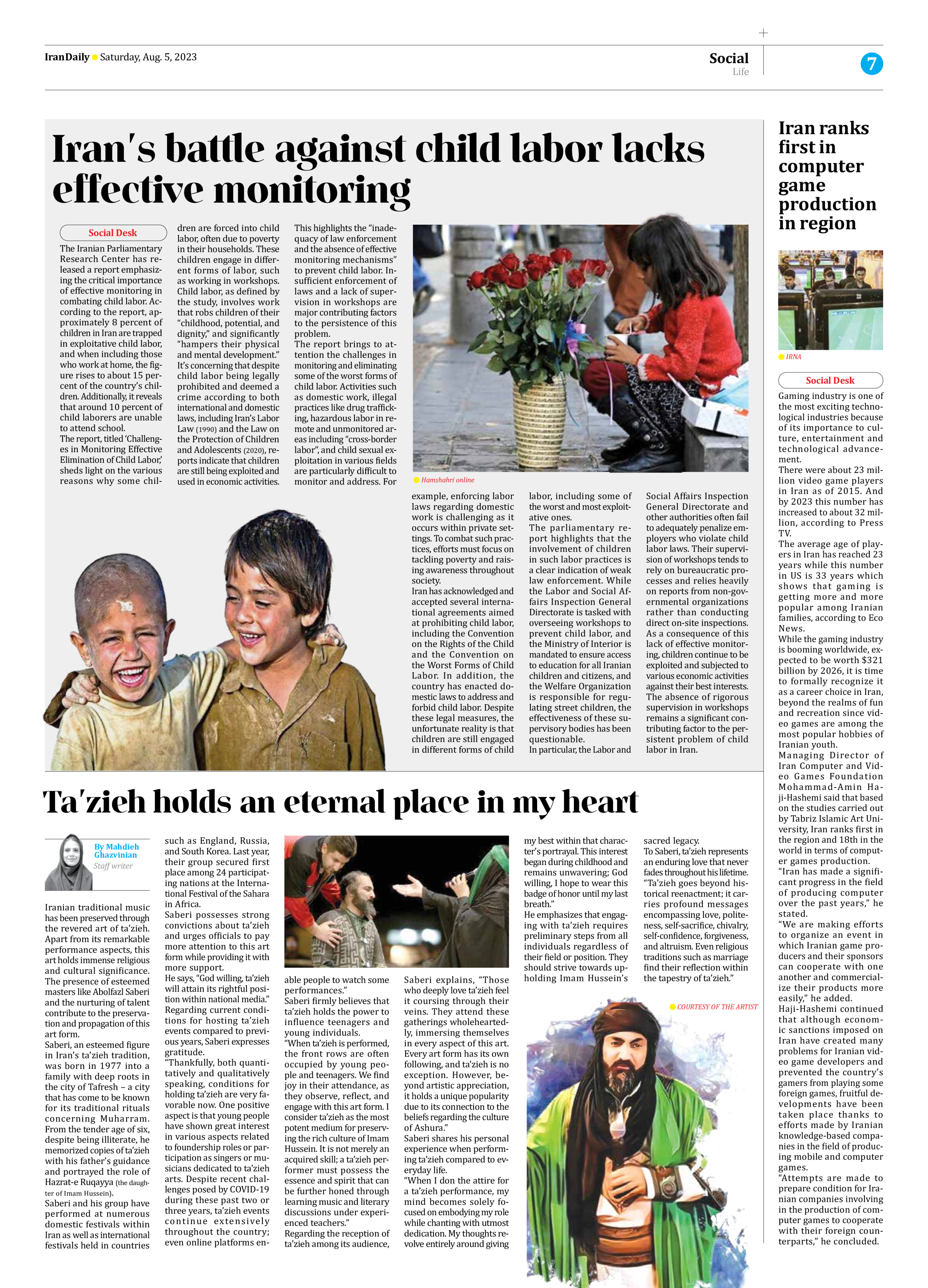
Iran’s battle against child labor lacks effective monitoring
The Iranian Parliamentary Research Center has released a report emphasizing the critical importance of effective monitoring in combating child labor. According to the report, approximately 8 percent of children in Iran are trapped in exploitative child labor, and when including those who work at home, the figure rises to about 15 percent of the country’s children. Additionally, it reveals that around 10 percent of child laborers are unable to attend school.
The report, titled ‘Challenges in Monitoring Effective Elimination of Child Labor,’ sheds light on the various reasons why some children are forced into child labor, often due to poverty in their households. These children engage in different forms of labor, such as working in workshops. Child labor, as defined by the study, involves work that robs children of their “childhood, potential, and dignity,” and significantly “hampers their physical and mental development.”
It’s concerning that despite child labor being legally prohibited and deemed a crime according to both international and domestic laws, including Iran’s Labor Law (1990) and the Law on the Protection of Children and Adolescents (2020), reports indicate that children are still being exploited and used in economic activities. This highlights the “inadequacy of law enforcement and the absence of effective monitoring mechanisms” to prevent child labor. Insufficient enforcement of laws and a lack of supervision in workshops are major contributing factors to the persistence of this problem.
The report brings to attention the challenges in monitoring and eliminating some of the worst forms of child labor. Activities such as domestic work, illegal practices like drug trafficking, hazardous labor in remote and unmonitored areas including “cross-border labor”, and child sexual exploitation in various fields are particularly difficult to monitor and address. For example, enforcing labor laws regarding domestic work is challenging as it occurs within private settings. To combat such practices, efforts must focus on tackling poverty and raising awareness throughout society.
Iran has acknowledged and accepted several international agreements aimed at prohibiting child labor, including the Convention on the Rights of the Child and the Convention on the Worst Forms of Child Labor. In addition, the country has enacted domestic laws to address and forbid child labor. Despite these legal measures, the unfortunate reality is that children are still engaged in different forms of child labor, including some of the worst and most exploitative ones.
The parliamentary report highlights that the involvement of children in such labor practices is a clear indication of weak law enforcement. While the Labor and Social Affairs Inspection General Directorate is tasked with overseeing workshops to prevent child labor, and the Ministry of Interior is mandated to ensure access to education for all Iranian children and citizens, and the Welfare Organization is responsible for regulating street children, the effectiveness of these supervisory bodies has been questionable.
In particular, the Labor and Social Affairs Inspection General Directorate and other authorities often fail to adequately penalize employers who violate child labor laws. Their supervision of workshops tends to rely on bureaucratic processes and relies heavily on reports from non-governmental organizations rather than conducting direct on-site inspections.
As a consequence of this lack of effective monitoring, children continue to be exploited and subjected to various economic activities against their best interests. The absence of rigorous supervision in workshops remains a significant contributing factor to the persistent problem of child labor in Iran.







